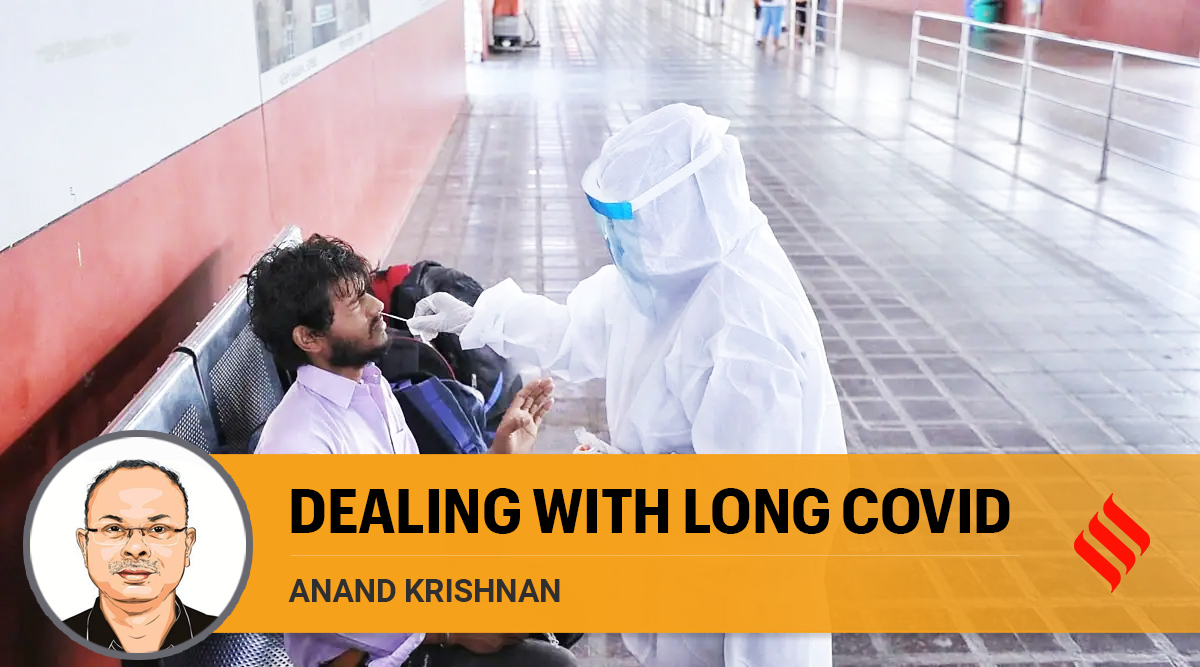Like Alice, we have reached a fork in the pandemic road. The answer, as the Cheshire cat said, depends on where we want to go. Unlike, Alice, we do know where we want to go: Back to pre-Covid “normalcy”. But we are not sure which road will take us there. Before we discuss what needs to be done to get there, let us summarize the current status and the lessons learned in the last two years.
Though the pandemic is not over, its worst phase is behind us as seen by relatively low levels of hospitalization and fatality. This is due to the combined effect of widespread natural infection and vaccination. Life is slowly returning to normal as in pre-Covid times with large gatherings at weddings and celebrations making a comeback. But the virus continues to evolve with each strain causing a spike in cases/hospitalisation/deaths fatigue is setting in at all levels – the media, public as well as the government.
The two major challenges are the specter of Long Covid and the continued focus on booster shots. There is no herd immunity as neither natural infection nor the current vaccines are preventing re-infections. Long Covid is poorly understood but it is becoming clearer that it is something that we should be seriously worried about. It has varied presentations and we are still nowhere near developing a common path to these conditions. We have to accept that the virus is not going anywhere. With that understanding, my suggestions would be:
Mainstream COVID: We have been treating Covid as a separate vertical or as an exception to the rule. It is time to take it as any other disease being treated in the healthcare system. It should treat Covid-19 in routine care like influenza and at best, in a separate infectious diseases ward where necessary protective measures are in place. Workplaces/schools should define a policy to deal with sporadic cases with the least amount of disruption to routine.
Strengthen surveillance: Establish a national integrated hospital-based severe acute respiratory infection surveillance system which covers SARSCoV-2, influenza and other respiratory viruses. It should tell us about the real-time trend of hospitalizations due to respiratory infections, identify the virus and the strain causing it through regular genomic sequencing and provide data for assessing vaccine effectiveness. Based on experience, we should be able to define thresholds for action especially related to managing the capacity of the healthcare system to deal with a surge.
Revisit immunization policy: There is evidence that the current vaccines developed with the first strain of the virus are losing their effectiveness. We simply cannot go on giving boosters with the same set of vaccines. It is time that we started looking at vaccines with newer variants to deal with antigenic drift as is done routinely in influenza. More importantly, we need to go beyond the emergency use authorization (EUA) given to vaccines and reassess their role in routine immunization based on more data on safety and efficacy that is now available. Some of the questions to consider would be whom (whole population or only high-risk groups) to vaccinate and the need for annual boosters.
Invest in research: There are still many unknowns in Covid infection. Some important ones are understanding the mechanisms, manifestations, and treatment modalities of Long Covid, a better understanding of immunological mechanisms involved and the continued quest for a universal vaccine. Research on specific treatments for acute infection is also worthwhile. Point-of-use tests and diagnostic workflow to improve the efficacy of testing, as well as the effectiveness of behavioral interventions, would also provide useful information.
Reassess the role of public health and social measures: lockdowns, travel restrictions, and containment zones have served their purpose and should be discontinued. Thermal checking and hand rubs at the entry of shops/malls should have been stopped a long time back. Mandatory mask use in high-risk settings (crowded and closed public spaces including air travel) should continue. The rest should be left to individuals, depending on their risk perception. Vaccine mandates for travel should be discontinued.
Prepare for an antigenic shift: This is the most important flashpoint. What happens when a completely new strain causes a pandemic? We have learned many lessons on how to respond quickly to a new pandemic. Rapid response of containment at the original site is critical. We are likely to have a new vaccine in double-quick time next time but we have a long way to go to ensure that it is distributed equitably globally. A much higher emphasis on financial protection of the vulnerable population is needed.
Another area where we need to work better nationally and globally is sharing data and intellectual property rights. Narrow commercial and national interests still prevail. Despite many efforts, we have not made sufficient headway in the global health security framework and mechanisms.
From the national point of view, the most important thing for the government to do is to review the institutional frameworks and mechanisms for future pandemic responses. While we may have such mechanisms, their capacity is suboptimal and autonomy is doubtful. One important lesson that we have learned is that a pandemic response is as much political as it is technical. A healthy respect for each other and keeping one’s individuality while working as a team is important.
My final advice to the reader is: You still need to avoid getting infected and prevent its spread further. Go back to your normal life, follow government directives, take additional precautions if you are at high risk, isolate yourself if you have symptoms and seek care if they get worse. Sometimes we have to make our own road to the destination.
The writer is professor, Center for Community Medicine, AIIMS-New Delhi. Views are personal

